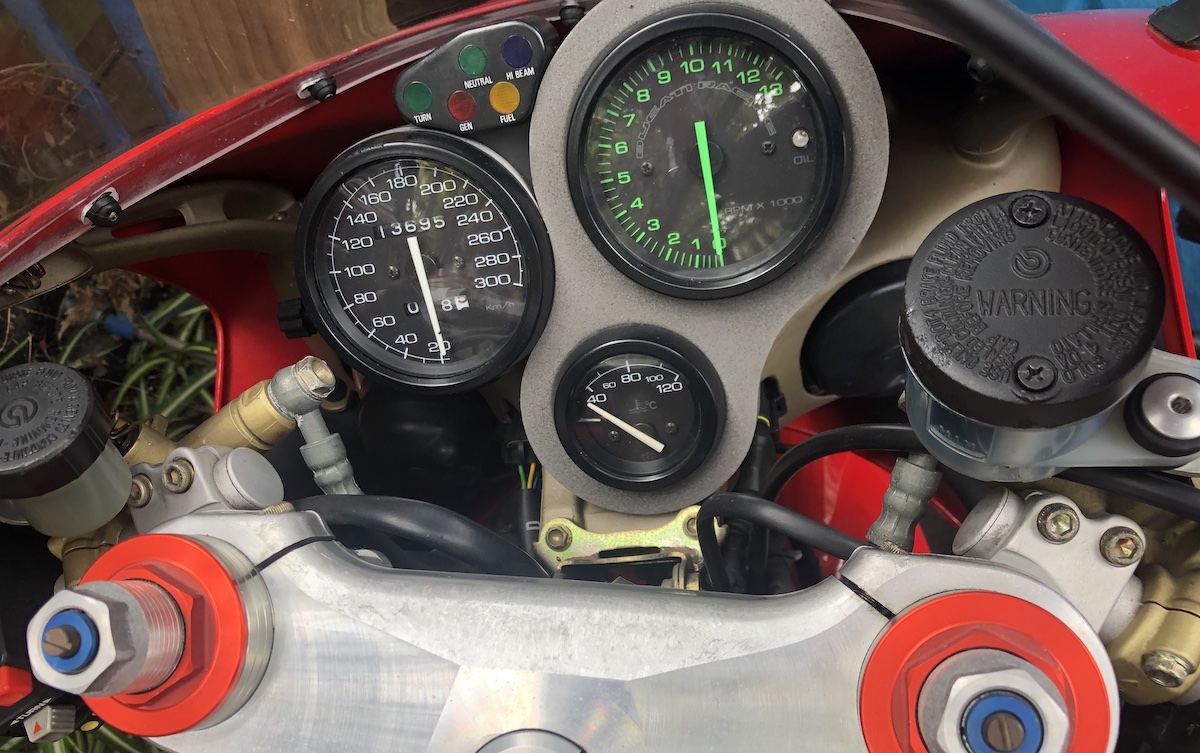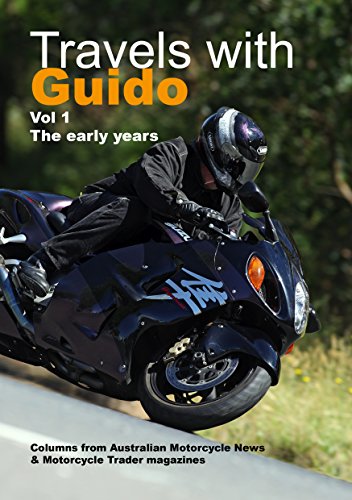Motorcycle Investor mag
Subscribe to our free email news
Jumping through hoops
Getting our Varese Ducati 916 Strada on
the road
(by Guy 'Guido' Allen, November 2023)
Getting our imported Ducati
916 on the road was more involved than we expected. At
last we're legal!
Really, it feels like we should
have some sort of parade. Or at least crack open a
decent bottle of something. Finally, after weeks, or
more like months, of rooting around we have the Ducati
916 on the road.
It shouldn't have been all that
hard. We in fact bought a fully-functional low-mile
Ducati 916 Strada (our second) from importer Brad's Vintage
Cycle Sales. It was exactly as promised and the
whole experience was pretty good.
A Japan import, it was going to
require some jumping through hoops to get on the road –
more than I expected, thanks to a combination of my
inexperience in this area and some relatively recent
changes of rules. Oh, and each state has its own take on
exactly how to do this.
Okay, so here's the drift of
what's involved. The bike is imported with what's called
a RAV approval, that includes permission to come into
the country and a new VIN. A new VIN for all imports is
the recent twist on the plot and has some knock-on
effects.
It's required that the VIN is
permanently applied to a critical section of the bike
(such as a frame), in a way that can't be removed – for
example as a stamping or a riveted-on engraved plate.
Some importers (like Brad) do it, others don't. It's
actually pretty easy to find someone to create an
engraved plate for you. The Australian VIN (which is an
extended version of the original chassis number) is used
for any roadworthy certificates and engineering
approvals.
From there, the rules for
actually registering an import can vary enormously. In
Queensland, registering an import is relatively
straight-forward process where you show up with your RAV
approval and an RWC. (Don't take my word for this –
check before you leap in!) In other states, like Vic and
NSW, you are likely to need an engineering inspection.
In Victoria, that inspection is
called a VASS and is required for anything made after
June 1975. Cost varies, but expect $500-600 as a
starting point. Stock standard bikes get a much smoother
run as they generally require nothing more than a visual
once-over. The inspection for the 916 took a couple of
hours and was very thorough. It included all the things
you would expect for a roadworthy. Whether it's actually
necessary is very much up for debate.
With the inspection passed, the
bike was then fitted with an engraved blue VASS approval
plate. It's a fair size and we ended up hiding it under
the seat.
With that done, we then needed
a roadworthy certificate. And yes, it does sound like
double-handling. Surely a roadworthy cert would suffice.
Loading in a VASS is a cost burden that's of
questionable value.
In the end we were fronting up
to VicRoads with a bunch of paperwork: the appropriate
registration application form(s), the RAV import
approval, The VASS engineering approval and the
roadworthy certificate. That applies regardless of
whether you're intending to put it on full registration
or club plates.
The good news is that once the
bike is registered, it will be on a national database
and things should be a whole lot easier for any
subsequent owner. It's also a great argument for buying
something that is already on the local database!
Perhaps fortunately, I made the
decision from the start to take the bike back to
standard. This particular machine is an early Varese
build and stock condition is what the market demands if
ever you plan to resell. I don't have any plans to at
this stage, but it's a whole lot easier to sort out now
than years down the track. (And if I want something fast
and modified to ride, there's a 220hp
Hayabusa called Hannibal in the shed...)
Returning to stock required
replacing the almost inevitable aftermarket Termignoni
mufflers (which have been kept) plus footpegs and
gearshift.
Just as aside, the mechanic who
did the roadworthy swore the non-folding footpegs the
bike originally presented with were illegal. He was
wrong and it was a good example of how one person's
misguided beliefs – without actually reading the
government guidance and regulations – can be a problem.
The 916 is not only old enough
to be on classic plates in Victoria (who knew we'd all
live that long?!) but requires patience when it comes to
finding some parts.
Standard footpegs (which I
wanted regardless of the spurious roadworthy issue) were
available used and new, and I ended up buying both
thanks to some long delays that threatened to derail the
whole project.
Stock mufflers are still
readily available, but the hardware to hang them
(different to the Termi gear) took ages to arrive.
We got there in the end, though
there were some weird gaps in availability of parts. For
example a stock set of new brake lines took a fair bit
to find. Someone online was asking Au$300 (US$190,
GB£160) plus shipping for a used set! We did find one
new, through an obscure shop I'd never come across
before.
So far I've only had a brief
ride on the thing – must put aside a day for a proper
run. The short squirt we did manage was probably the
first time I've ridden one with stock pipes since they
were launched in the mid-1990s.
While lacking the theatre of
the booming Termis, the factory mufflers do make the
thing feel smoother and more civilised. It would be nice
to be able to flick a switch to get Termi or tame mode
on demand.
Aside from that, it's typical
916. You have to play on some curves to enjoy the thing
properly, but even a brief run around town reminds you
that it's something special. Slim, willing, feisty and
beautifully formed.
Now that I know the routine for
getting an import on the road, the next one should be a
whole lot easier. We'll let you know.
Oh, and we'll bring you an
update once we get to have a proper play with this
one...

-------------------------------------------------
Produced by AllMoto abn 61 400 694 722
Privacy: we do not collect cookies or any other data.

Archives
Contact




